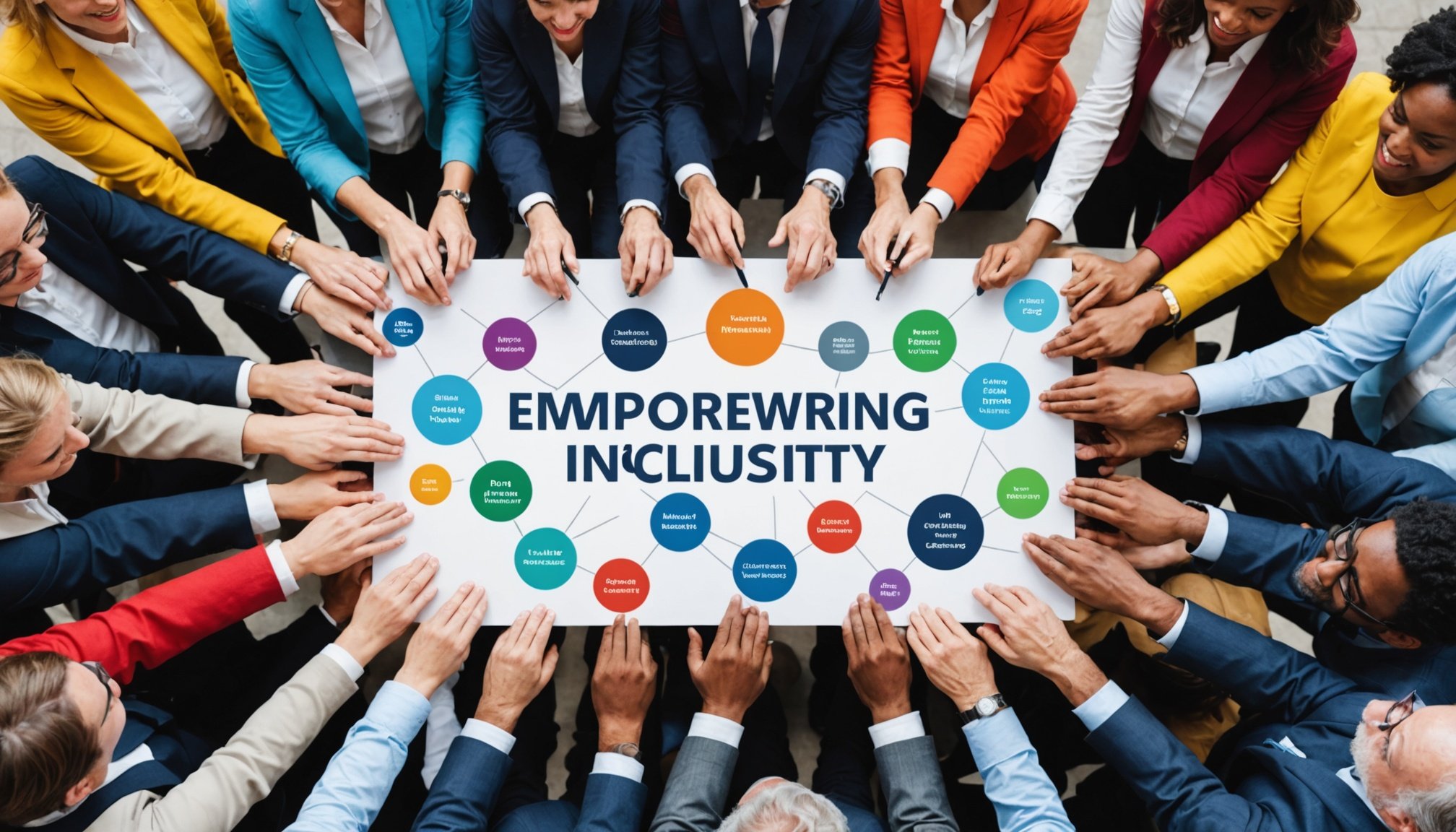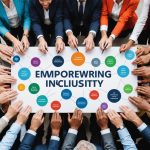Understanding Inclusivity in Charitable Organizations
Inclusivity in charities is a pivotal aspect that not only fosters a welcoming environment but also enhances the overall impact and reach of UK charitable organizations. At its core, inclusivity involves creating a workplace culture where diversity is valued, and everyone feels respected and empowered to contribute. This approach is essential, as it encourages employee engagement and commitment, driving the charity’s mission forward effectively.
The importance of inclusivity is increasingly recognized in the charity sector. Creating a workplace culture that embraces diversity enhances the charity’s credibility and trust within diverse communities. When employees are part of an inclusive environment, they are more likely to be engaged, motivated, and committed to the organization’s goals.
Additional reading : Mastering b2b content marketing in the uk: your ultimate guide to creating a successful strategy
Recent statistics reflect the current state of diversity and inclusion within UK charities. Although there have been commendable efforts in many organizations, the data indicates room for improvement. The challenge remains to translate policies into practice and ensure that inclusivity is not just preached but lived daily. By prioritizing inclusivity, UK charitable organizations can better represent and serve the diverse communities relying on their support.
Strategies for Promoting Inclusivity
Promoting inclusivity within an organisation requires a comprehensive approach, integrating various strategies to ensure every individual feels valued and included.
Additional reading : Ultimate guide to developing an effective social media strategy for uk fitness influencers: your step-by-step blueprint for success
Leadership Commitment
Leadership commitment is foundational. Executives must actively prioritize inclusiveness by allocating resources and participating in initiatives. Leaders can serve as role models, showcasing the significance of inclusivity for business growth and employee well-being. This requires transparency in communication and demonstrating a genuine commitment to inclusive practices.
Employee Training Programs
Implementing employee training programs is another key strategy. These programs should be designed to educate staff on the value of diversity and equip them with the skills needed for fostering an inclusive environment. Workshops and interactive sessions can facilitate discussions about unconscious bias and cultural competence, encouraging employees to reflect on and improve their behaviours.
Regular Assessment and Feedback
Regular assessment of inclusivity efforts is crucial. Organisations should establish methods to gather employee input on inclusivity initiatives through surveys or feedback sessions. This allows for ongoing evaluation of current practices and identifies areas for improvement. Providing channels for feedback demonstrates the organisation’s commitment to adapting and evolving its inclusiveness strategies, eventually leading to a more supportive workplace.
Benefits of a Vibrant Workplace Culture
Fostering inclusivity within a workplace culture holds immense potential, directly boosting employee engagement. When team members from varied backgrounds feel included, they are more likely to participate actively and invest emotionally in their work. This engagement is crucial, as studies indicate that workplaces with high levels of inclusivity see remarkably enhanced productivity and retention rates. Diverse teams bring complementary skills and perspectives that drive innovation and efficiency. Employees in inclusive environments are motivated to bring their best selves to work, contributing to sustained company success.
In the charity sector, the advantages of a vibrant workplace culture extend even further. Here, inclusivity not only enhances internal dynamics but positively influences external stakeholder relationships as well. A diverse team is more likely to resonate with a broader audience, establishing stronger connections with the communities they serve. This extended reach can lead to increased support and funding, enhancing the sector’s impact and relevance.
Moreover, a workplace embracing diversity and inclusivity can also contribute positively to broader societal goals. As a result, fostering such a culture not only benefits employees and the organization but also has the potential to make a significant positive community impact.
Real-Life Examples of Inclusivity in Action
Exploring how inclusivity manifests in practice offers valuable insights. Let’s delve into case studies of how UK charitable organizations spearhead inclusivity.
Case Study: Organization A
Organization A has implemented a ground-breaking inclusivity initiative focusing on disability inclusion. They partnered with local businesses to adapt physical spaces, making them accessible to individuals with mobility challenges. This collaboration has empowered members of the community, providing them with greater independence. Organization A measures success by evaluating increased foot traffic and participant feedback. Their approach showcases how targeted inclusivity efforts can make a significant impact.
Case Study: Organization B
Organization B focuses on cultural inclusivity. They introduced multicultural workshops designed to celebrate diversity. These workshops encouraged dialogue and understanding among various cultural groups, promoting a sense of belonging. The success of these initiatives has been gauged through participant surveys and community engagement metrics. Organization B’s efforts demonstrate the power of inclusive environments in uniting diverse communities.
Lessons Learned and Best Practices
Successful inclusivity initiatives often hinge on:
- Establishing collaborative partnerships
- Creating adaptable strategies
- Emphasizing participant feedback
- Measuring impact through clear metrics
Such measures underscore the importance of inclusivity and offer a blueprint for other organizations striving to foster an inclusive atmosphere.
Resources for Training and Development
In fostering a more inclusive environment, various training resources offer invaluable assistance. Numerous programs and organizations provide workshops specifically designed to enhance inclusivity in diverse settings. For instance, workshops focused on cultural awareness and sensitivity training can be instrumental. Some well-known organizations offer comprehensive training modules, ensuring participants gain a thorough understanding of inclusivity best practices.
For those interested in personal growth, tools for self-assessment can be a great starting point. These tools allow individuals to evaluate their current level of awareness and identify areas for improvement. By engaging in self-assessment, you can tailor your learning journey specifically to your needs. Additionally, many of these tools suggest specific workshops or programs for further development.
The internet is a treasure trove of online resources. Many free and paid online courses provide literature on inclusivity practices, which are accessible anywhere and cater to different learning preferences. Websites often offer forums where learners can discuss and exchange ideas, fostering a supportive learning community. By exploring these various resources, individuals and organizations can make informed decisions about the most suitable training paths for their development needs.
Concluding Thoughts on Cultivating Inclusivity
In recent years, the future of inclusivity has become an ever-evolving landscape, particularly within the charitable sector. As organisations strive to adapt, it’s essential to recognise the long-term impact these inclusivity efforts can have on their communities and beneficiaries. Sustainable practices in promoting inclusivity are not just about implementing changes; they require ongoing commitment and active participation to thrive.
Encouraging a culture of accountability within charities can foster continuous improvement. This means regularly evaluating and refining inclusivity efforts to ensure they remain effective and aligned with evolving societal needs. An honest assessment of practices allows organisations to identify areas for growth and development, paving the way for meaningful and lasting change.
Furthermore, the long-term impact is only achievable through a shared responsibility among all stakeholders. This involves engaging staff, volunteers, and beneficiaries in conversations about diversity and inclusivity, ensuring their voices are heard and valued. By doing so, charities can create empowering environments where everyone feels included and motivated to contribute to their mission.
To embrace the future of inclusivity, continuous learning and adaptation are vital. Charities must remain open to new approaches and innovative ideas, nurturing a progressive and forward-thinking mindset.











